An American girl works in a marketing agency with cute clothes in Paris, what could’ve gone wrong, right? That was my first thought when I saw the trailer of Emily in Paris. Everything was appealing especially for me, a self-proclaimed casual Netflix romance-drama-comedy enjoyer.
Then, I watched.
Hmm.. okay, a junior brand manager in an American marketing agency takes a job for a year at a French marketing agency. First few minutes, I was hooked… then she came to Paris and I was questioning and ranting at her every move every single time ever since.
Despite my huffing and puffing, I watched both seasons dissecting every single scene that I found cringey in one sitting and closed my laptop after asking myself: why in the world did I enjoy hating this show? And that’s how I discovered the term, hate-watching.
What is Hate-watching?
Based on this article from BBC, hate-watching is an advanced form of fandom in an era defined by the power of fandom, a hate-watcher is picking apart a show she thinks she should like, and trying to figure out why she doesn’t; a genre or a creator she normally respects, and trying to figure out what went wrong this time; or a piece of work that seems intended to be great but falls far short. In short, a hate-watcher has some degree of expectation and/or prior knowledge of the plot and character of the series, yet it somehow isn’t fulfilled.
The pleasure of hate comes from laughing at the absurdity that meticulously picks apart a poor quality storyline, analyzes the awful characters, and the cherry-on-top would be finding community in sharing hatred for a TV show. And because hate-watchers are counted the same as love-watchers in ratings, shows can become hits if enough people hate them enough.
From the final season of HBO’s Game of Thrones to Netflix’s Emily in Paris, hate-watching is something we unconsciously keep doing and oftentimes use social media (Twitter, I see you) as a platform to express our feelings towards the TV shows that we watch.
In the digital era, it seems everyone feels entitled to throw judgement about anything and what better way to understand this phenomenon than to delve into social media. Using tools like social listening, we’re able to understand what the people are saying, what are the trending topics, the overall sentiment, and what are the things that they find to enjoy and/or hate the most.
Hate-Watching Phenomenon for Emily in Paris in Southeast Asia
In order to understand the nature of hate-watching TV shows, specifically Emily in Paris, our team at Wavemakers utilized our social listening tool to uncover what the hate-watching phenomenon for Emily in Paris looks like in Southeast Asia (specifically, Indonesia, Malaysia, Philippines, and Singapore). Monitoring between the release date (22 Dec 2021 to 18 January 2022) until the the aftermath of the two new seasons announcement, here’s what we have gathered:
Mentions since release date

Upon the release date, the number of mentions for Emily in Paris in these countries increased steadily with a slight dip on Christmas day. The mention peaked the highest the day after Christmas, likely because people spent their time during their holiday watching the show which brought a total of 561 mentions in a day. The number of mentions decreased gradually before a spike occurred on 11th January as Netflix announced the series was renewed for season 3 and season 4.
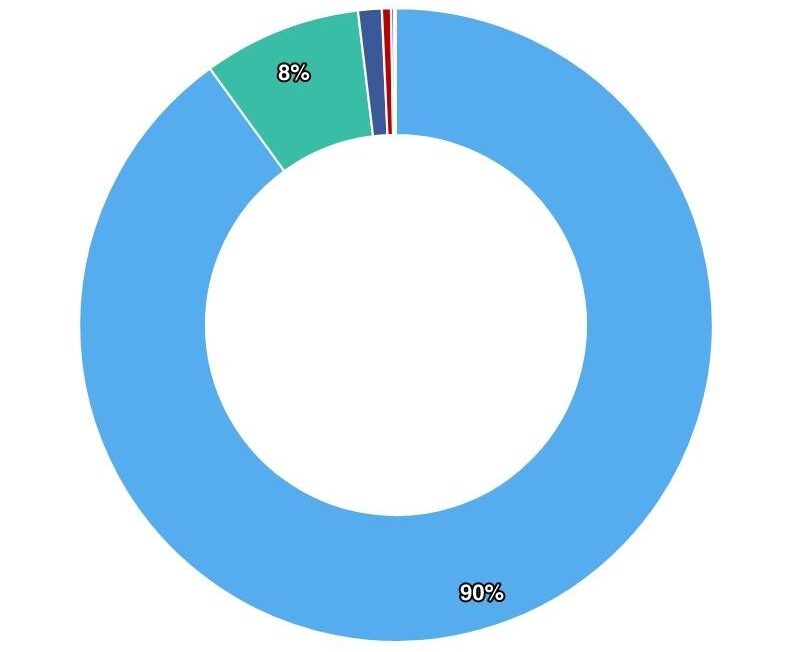 As many as 33,03 million impressions were gathered from 6004 mentions (in a span of 29 days since the release date) with 90% of the mentions coming from Twitter, followed by 8% from Web and the rest coming from Facebook, YouTube, and Reddit.
As many as 33,03 million impressions were gathered from 6004 mentions (in a span of 29 days since the release date) with 90% of the mentions coming from Twitter, followed by 8% from Web and the rest coming from Facebook, YouTube, and Reddit.
Total mentions per country for Emily in Paris
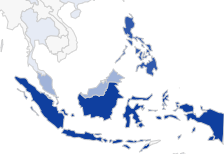
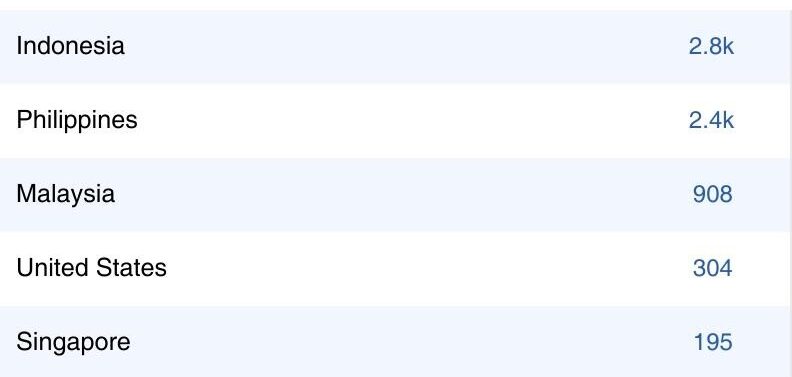
From our insights, most of the mentions came from Indonesia with a total of 2,806 mentions or 46.4% of the total mentions followed by Philippines with 2,356 mentions or 39% of the total mentions not too far behind.
Audience Sentiment in Singapore
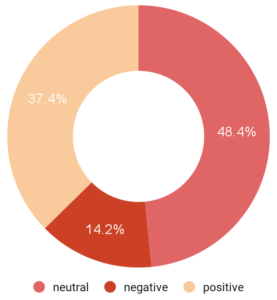 Based on the data that we have gathered, 48.4% of the audience in Singapore have a neutral sentiment and a 37.4% positive sentiment towards Emily in Paris. However at the same time they have a pretty high negative sentiment at 14.2%.
Based on the data that we have gathered, 48.4% of the audience in Singapore have a neutral sentiment and a 37.4% positive sentiment towards Emily in Paris. However at the same time they have a pretty high negative sentiment at 14.2%.
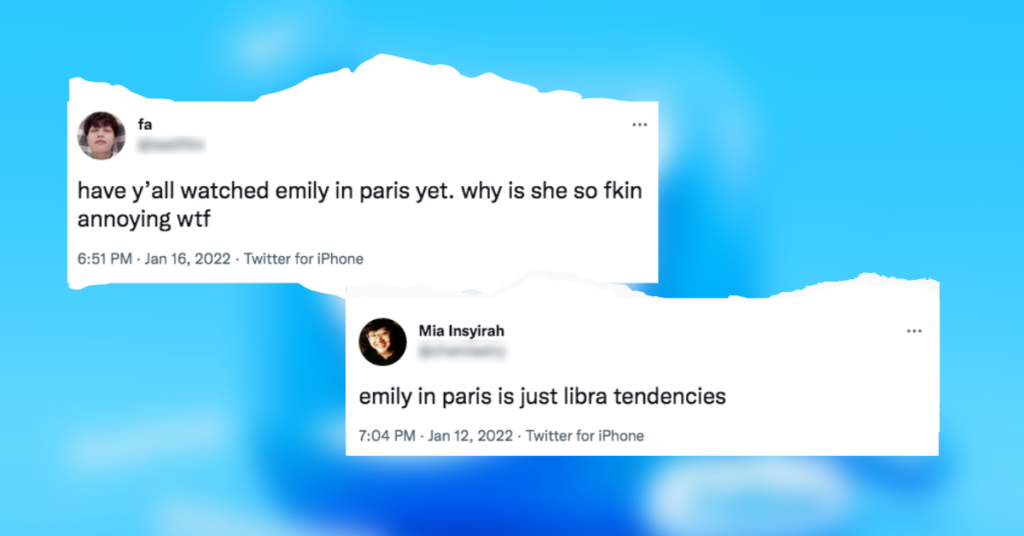
Audience Sentiment in Philippines
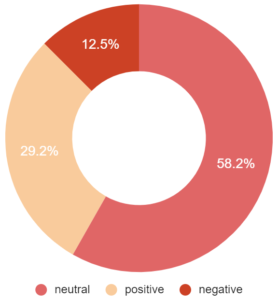 Based on the data that we have gathered, 58.2% of the audience in the Philippines have a neutral sentiment and 29.2% positive sentiment towards Emily in Paris. They also have a lower negative sentiment at 12.5% compared to Singapore.
Based on the data that we have gathered, 58.2% of the audience in the Philippines have a neutral sentiment and 29.2% positive sentiment towards Emily in Paris. They also have a lower negative sentiment at 12.5% compared to Singapore.
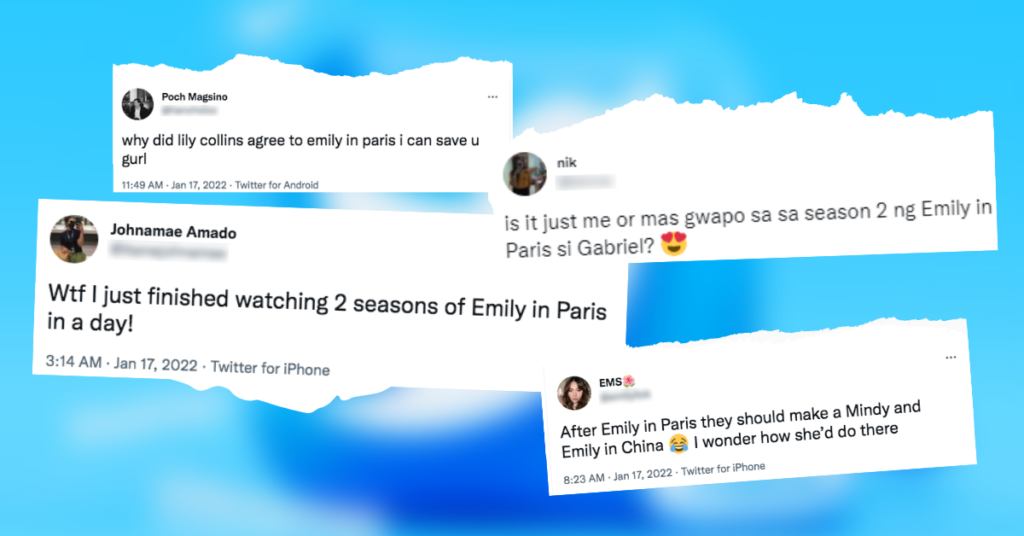
Audience Sentiment in Malaysia
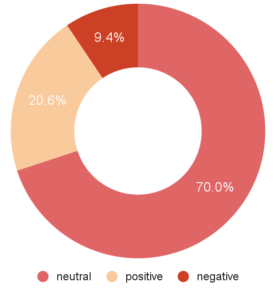 Based on the data that we have gathered, 70% of the audience in Malaysia have a neutral sentiment and a 20.6% positive sentiment towards Emily in Paris. They also have a lower negative sentiment at 9.4% compared to Singapore and the Philippines.
Based on the data that we have gathered, 70% of the audience in Malaysia have a neutral sentiment and a 20.6% positive sentiment towards Emily in Paris. They also have a lower negative sentiment at 9.4% compared to Singapore and the Philippines.
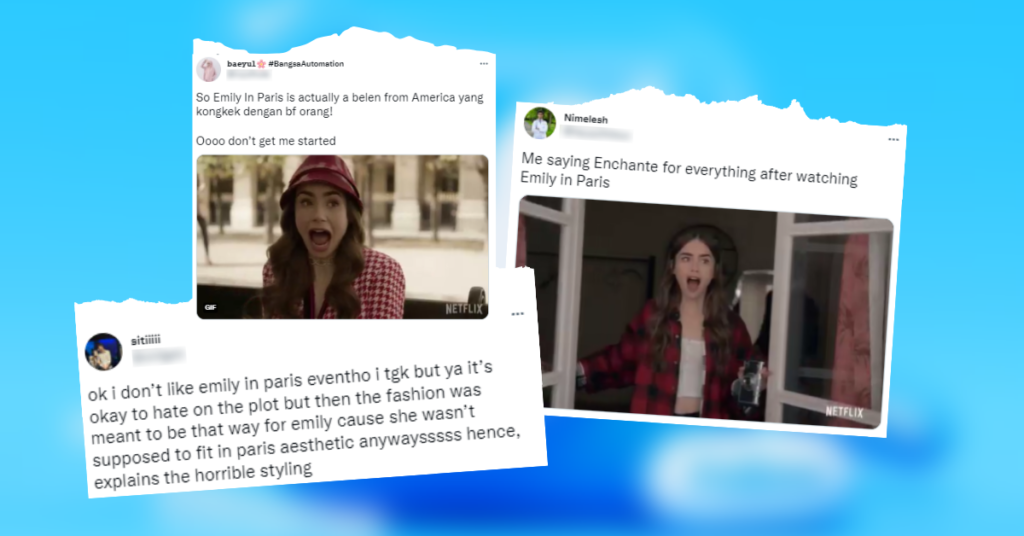
Audience Sentiment in Indonesia
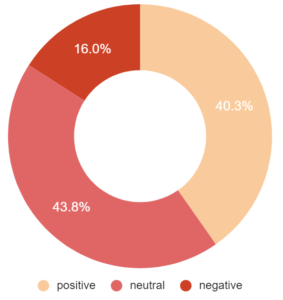 Based on the data that we have gathered, 43.8% of the audience in Indonesia have a neutral sentiment and a very high positive sentiment of 40.3% (compared to other countries) towards Emily in Paris. At the same time they also have the highest negative sentiment at 16% compared to all countries.
Based on the data that we have gathered, 43.8% of the audience in Indonesia have a neutral sentiment and a very high positive sentiment of 40.3% (compared to other countries) towards Emily in Paris. At the same time they also have the highest negative sentiment at 16% compared to all countries.
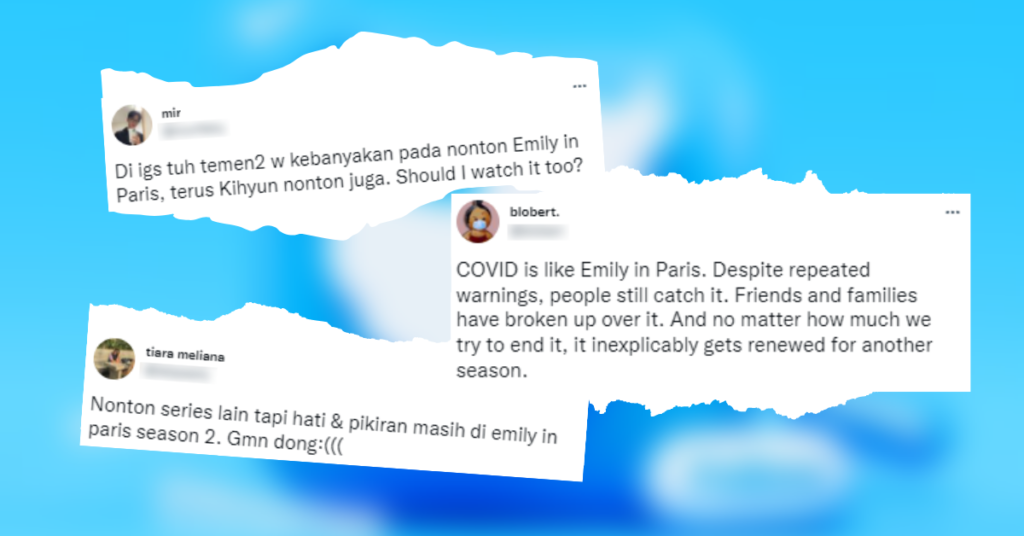
Key Takeaway
Overall, we could say that the average sentiments of the show across these countries are mainly neutral and less positive. The negative sentiments also show that people across the region are aware of the unrealistic plot and dislike specific (mainly Emily) characters on the show.
Across the region, the show seems to be highly talked about in some countries like Indonesia and the Philippines but of course it is worth noting that when compared to population size it is still relatively small.
One of the phenomenon that is worth mentioning is the hate-watching, where people watch the series and rant about how bad the series is yet seem to be attached and end up binge-watching it.
If you’d like to dive deeper into the data and gather more interesting insights in the market; contact us here.
Related Posts
15.08.2023
Interview Training Course: How to Impress Your Interviewer and Land Your Dream Job
Discover how an interview training course can be your ticket to acing job…
24.07.2023
How Internet Marketing Training Can Boost Your Business Growth
Navigating the vast digital landscape requires savvy marketing skills, good…
26.06.2023
Effective Communication Training: 10 Key Components for Building Strong Teams
Team collaboration hinges on efficient and effective communication. The…




